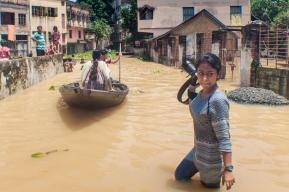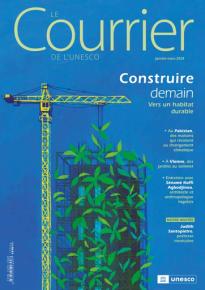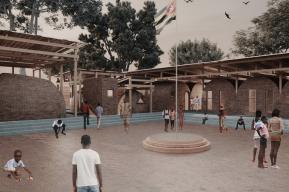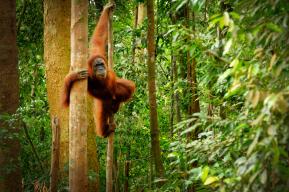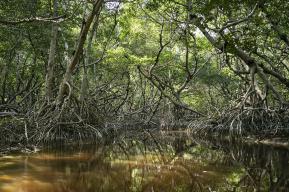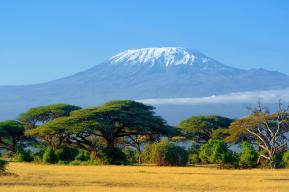مقال
نشأة اللجنة الدولية الحكومية لعلوم المحيطات

غداة الحرب العالمية الثانية، دعت بعض الدول إلى تبادل المعارف المتّصلة بالمحيطات على الصعيد العالمي. وقد وجب انتظار ديسمبر 1960 لإنشاء أول هيئة مُكلّفة بتعزيز التعاون في مجال علوم البحار (الأوقيانوغرافيا)، وهي لجنة اليونسكو الدولية الحكومية لعلوم المحيطات.
ينس بويل
مؤرخ دنماركي ورئيس قسم الأرشيف باليونسكو من سنة 1995 إلى سنة 2017. كان وراء إطلاق مشروع "تاريخ اليونسكو" سنة 2004، وهو مشروع يشجع على استغلال أرشيف المنظمة. له كتاب سيصدر سنة 2022 بعنوان استكشاف المحيط Exploring the Ocean، يتناول فيه تاريخ لجنة اليونسكو الدولية الحكومية لعلوم المحيطات.
خلال الفترة الممتدّة من سنة 1959 إلى سنة 1965، جالت المحيط الهندي 45 سفينة مختصّة في البحوث، حاملة لأربعة عشر علمًا مختلفًا. وكان لمجموعات الأطلس والخرائط والدراسات العلمية التي أنتجتها هذه البعثة أثره في إحداث ثورة في المعارف الجيولوجية والجيوفيزيائية والبيولوجية المتعلقة بهذا المحيط حيث مكّنت البيانات التي تم جمعها من معرفة أفضل للرياح الموسمية وتنوعاتها، إضافة إلى اكتشاف موارد غذائية وحقول معدنية. كما ساعدت البعثة بلدانًا مثل الهند وإندونيسيا وباكستان وتايلاند على تطوير بُناها التحتية في مجال علوم البحار. وتعتبر هذه البعثة الدولية للمحيط الهندي إنجازا فريدا من نوعه وأكبر مبادرة لم يسبق إطلاق مثيل لها من قبل.
وقد مثّل هذا التنسيق للجهد البحثي الدولي غير المسبوق أوّل مهمة كبرى للجنة اليونسكو الدولية الحكومية لعلوم المحيطات التي احتفلت بالذكرى الستين لتأسيسها في 14 ديسمبر 2020.
التشارك في المعارف
كان الطريق طويلا نحو إنشاء اللجنة الحكومية الدولية للمحيطات. فمنذ الدورة الأولى للمؤتمر العام، في نوفمبر 1946، اقترحت الهند إنشاء معهد لعلوم المحيطات وصيد الأسماك يُكلّف بدراسة المحيط الهندي. لكن المبادرة السياسية الأولى من أجل إدراج علوم البحار في برنامج اليونسكو تعود إلى اليابان التي قدمت، سنة 1952، مشروع قرار يدعو المنظمة إلى تعزيز التعاون الدولي في مجال علوم المحيطات. ويهدف المشروع إلى بلوغ الاستغلال الأمثل للموارد البحرية (صيد الأسماك والموارد المعدنية والطاقة) و"توفير أرضية للعيش السلمي للإنسانية جمعاء". وقد حظي المشروع بقبول حسن لكنه لم يُشفع برصد موارد ذات بال من قبل اليونسكو. ووجب انتظار سنة 1954 ليحظى المشروع باهتمام أكبر بمناسبة انعقاد الجلسة الموالية للمؤتمر العام، عندما اقترحت اليابان من جديد إطلاق برنامج في مجال علوم البحار.
وقد كان لمشروع السنة الجيوفيزيائية الدولية ( يوليو 1957 - ديسمبر 1958 ) دور أساسي في الديناميكية التي دفعت إلى إنشاء لجنة اليونسكو الدولية الحكومية لعلوم المحيطات حيث تولّى هذا المشروع إعداد إطار لسلسلة هامّة من الأنشطة الجيوفيزيائية العالمية. ورغم أن أبرز هذه الأنشطة كان إطلاق السوفييتيين للقمر الصناعي سبوتنيك 1، كأول قمر صناعي، إلا أن السنة الجيوفيزيائية الدولية عزّزت أيضا، على نحو كبير، اهتمام المجتمع الدولي بمشاريع علوم المحيطات.
هذا الاهتمام أملته دوافع مختلفة، خاصّة منها دراسة الأمواج والتيارات البحرية، وحركات المد والجزر، والانشغال بخصوص التلوث الإشعاعي، والبحث عن الموارد الغذائية أو الطبيعية، ورغبة العلماء في تحسين المعرفة بالقيعان العميقة للبحار، والتفاعلات بين المحيطات والغلاف الجوي. هكذا أخذت فكرة وجوب جمع البيانات حول كل هذه المواضيع وتقاسمها، عالميًا، تفرض نفسها تدريجيا.
في يوليو 1960، نظّمت اليونسكو في كوبنهاغن، بالدنمارك، مؤتمرا حول علوم المحيطات، شاركت فيه وفود من 35 دولة وممثلون عن منظمات دولية أخرى، وأوصى بإنشاء هيكل حكومي دولي جديد لتطوير الدراسة العلمية للمحيطات. وتمت الموافقة على هذا الاقتراح في ديسمبر 1960 من قبل المؤتمر العام.
هذه المبادرة كانت الأولى من نوعها، إذ لم يسبق لعلوم المحيطات أن حُظيت بمثل هذه المكانة المُتميّزة في جدول الأعمال السياسي الدولي.
من الفكرة إلى التطبيق
عند تأسيس اللجنة الحكومية الدولية للمحيطات، كان بعض العلماء يفضل إنشاء وكالة تابعة للأمم المتحدة قائمة بذاتها تحت تسمية المنظمة العالمية لعلوم المحيطات. وتساءلت وكالات أخرى تابعة للأمم المتحدة عن الأسباب التي جعلت اليونسكو تأخذ بزمام المبادرة في هذا المجال، نذكر منها بالخصوص منظمة الأغذية والزراعة (الفاو) والمنظمة العالمية للأرصاد الجوية، اللتين رجّحتا خبرتهما في مجالي صيد الأسماك والرصد الجوي.
فمسألة توزيع الصلاحيات داخل منظومة الأمم المتحدة مثّلت تحديًا على مرّ السنين، إلّا أن معظم أنشطة اللجنة الحكومية الدولية للمحيطات كانت تُنجز بالتعاون الوثيق مع وكالات الأمم المتحدة وشركاء آخرين. كما لعبت هذه اللجنة دورًا نشيطا في أشغال الأمم المتحدة لا سيّما في اتفاقية الأمم المتحدة لقانون البحار التي تعتبر الإطار القانوني العالمي للمحيط.
أما التحدي الآخر فتمثّل في تحديد مشمولات هذه اللجنة الجديدة. فمنذ البداية، طُرح السؤال حول ما إذا كان يجب دعم البحوث المتقدّمة لتوسيع حدود المعرفة في أسرع وقت ممكن، أم التركيز على تنمية قدرات علوم المحيطات في البلدان النامية. وفي واقع الأمر، استطاعت اللجنة الحكومية الدولية للمحيطات تأمين الخيارين معا، مع تركيزها اليوم، على نحو أكبر، على تعزيز القدرات.
خلال 60 عامًا من وجودها، عملت اللجنة، التي أصبحت تضم الآن 150 دولة عضوًا، على إعادة توجيه أنشطتها تدريجياً نحو أنظمة المراقبة المنهجية والمستمرّة مثل النظام العالمي لرصد المحيطات الذي أُنشئ سنة 1991، والمفهوم العام للتنمية المستدامة. لكن يبقى من صميم نشاطها البحث وتبادل المعارف حول جميع المواضيع المتعلقة بعلوم المحيطات، كما هو الشأن بالنسبة لتقرير علوم المحيطات العالمي.
وكان من أوّل إنجازات اللّجنة إنشاء برنامج التبادل الدولي للمعطيات والمعلومات الأوقيانوغرافية سنة 1961، والذي ما زال يمثل حجر الزاوية في عمل اللجنة الحكومية الدولية للمحيطات، ونذكر من بين المشاريع التي يتكوّن منها هذا البرنامج نظام المعلومات البيوجغرافية للمحيطات (منذ 2009). ومن بين نقاط القوة الأخرى في أنشطة اللجنة الحكومية الدولية للمحيطات نظام الإنذار المبكّر ضدّ التسونامي والتخفيف من نتائجه في المحيط الهادئ الذي أنشئ سنة 1965 لإنقاذ الأرواح، وصار من وقتها نموذجا يحتذى به لفائدة المناطق الأخرى المُعرّضة للأخطار مثل المحيط الهندي، ومنطقة البحر الكاريبي، وشمال شرق المحيط الأطلسي، والبحر الأبيض المتوسط.
كما أخذت اللجنة الحكومية الدولية للمحيطات زمام المبادرة خلال العشرية الدولية لاستكشاف المحيطات (1971-1980) للتحسيس بأهمية علوم المحيطات. لذلك، من الطبيعي أن تُصبح، بعد خمسين سنة، الوكالة الرائدة بمناسبة إعلان الأمم المتحدة فترة 2021-2030 "عشرية علوم المحيطات من أجل التنمية المستدامة".
مطالعات ذات صلة
لجنة اليونسكو الدولية الحكومية لعلوم المحيطات: خمسة وعشرون سنة من البحوث، رسالة اليونسكو، فبراير 1986
اليونسكو وعلوم المحيطات، رسالة اليونسكو، يناير 1977
عشرون دولة تستكشف المحيط الهندي: على خطى العلوم، رسالة اليونسكو، أكتوبر 1962
اشترك في رسالة اليونسكو لمتابعة الأحداث. الاشتراك في النسخة الرقمية مجاني 100%.
By Jens Boel
Between 1959 and 1965, forty-five research vessels sailing under fourteen different flags explored the Indian Ocean. Atlases, maps and scientific studies resulting from this expedition revolutionized geological, geophysical and marine-biological knowledge of this ocean. The monsoon and its variations were better understood, and food resources and mineral deposits discovered. The expedition also enabled countries like India, Indonesia, Pakistan and Thailand to build or expand their marine science infrastructures. The International Indian Ocean Expedition (IIOE) was unique, and at the time, was the biggest ocean exploration ever launched.
Co-ordinating this unprecedented international research effort was the first major activity of the Intergovernmental Oceanographic Commission (IOC), which celebrated its sixtieth anniversary on 14 December 2020.
Knowledge sharing
The journey towards the creation of the IOC had been a long one. Already, at the first session of the General Conference in November 1946, India had proposed the creation of an institute of oceanography and fisheries to study the Indian Ocean. However, the first political initiative to make UNESCO include marine science activities in its programme came from Japan. In 1952, the country presented a draft resolution with the purpose of engaging UNESCO to promote international co-operation on oceanography. This was done with the view to optimize the use of marine resources – fisheries, minerals and energy – and thereby “provide a basis for the peaceful coexistence of all mankind”.
Never before had ocean sciences been so high up on the international political agenda
The proposal was well-received, but did not lead to any significant commitment of UNESCO’s resources. The breakthrough came at the next session of the General Conference, in 1954, when Japan again proposed that UNESCO should launch a marine sciences programme.
The International Geophysical Year (IGY), from July 1957 to December 1958, was an essential part of the dynamics that eventually led to the creation of the IOC. During this time, the IGY formed the framework for a vast range of global geophysical activities.
The best known of these is the Soviet launch of Sputnik I, the first artificial satellite, but the IGY also greatly enhanced the interest of the international community in oceanographic projects.
This interest was driven by a variety of motivations – in particular an interest in waves, currents and tides; concerns about radioactive pollution; the search for food and other resources in the ocean; the wish to explore the deep sea bed, and to understand the interactions between the ocean and the atmosphere. The idea that it was necessary to collect and share data on a global scale on all these subjects was gradually gaining ground.
In July 1960, UNESCO convened an oceanographic conference in Copenhagen, Denmark. Delegations from thirty-five countries gathered with representatives of other United Nations agencies and international organizations. They recommended that UNESCO establish a new intergovernmental body to promote the scientific investigation of the ocean.
The proposal was accepted in December 1960 by the General Conference. It was unprecedented. Never before had ocean sciences been so high up on the international political agenda.
From idea to action
In the beginning, the IOC’s place in UNESCO was far from obvious. Some of the scientists who took the initiative to create the Commission would have preferred the establishment of a separate United Nations agency, the World Oceanographic Organization (WOO). Other UN agencies questioned why UNESCO should take the lead in this particular field. For instance, both the Food and Agriculture Organization (FAO) and the World Meteorological Organization (WMO) put forward their expertise in fisheries and meteorology respectively.
Issues about ‘who should do what’ have remained a challenge over the years, but most IOC activities have been carried out in close co-operation with UN agencies and other stakeholders. The IOC also has a recognized role in the UN Convention on the Law of the Sea (UNCLOS), the global legal framework for the ocean.
Another challenge was the scope of the mandate of the new Commission. One of the debates at the beginning was whether it should mainly support the most advanced research to push the boundaries of human knowledge of the ocean as quickly as possible, or concentrate on building the oceanographic capacities of developing countries. In reality, the IOC has been doing both, with a greater emphasis on capacity development today.
During the sixty years of its existence, the IOC, which now has 150 Member States, has gradually reoriented its emphasis towards systematic, sustained observation systems – such as the Global Ocean Observing System (GOOS), created in 1991 – and the overarching concept of sustainable development. At the same time, research and knowledge sharing on all ocean science-related topics, such as The Global Ocean Science Report, remain the leitmotif of its work.
Research and knowledge sharing on all ocean science-related topics remain the leitmotif of the IOC’s work
An early accomplishment was the establishment, in 1961 of the International Oceanographic Data and Information Exchange (IODE), which remains a cornerstone programme of the IOC. Among its projects since 2009, is the Ocean Biodiversity Information System (OBIS).
Another highlight of the IOC’s activities is the Pacific Tsunami Warning and Mitigation System (PTWS). Created in 1965 to save lives, it has since served as a model for other exposed regions – including the Indian Ocean, the Caribbean, the North-East Atlantic and the Mediterranean.
The IOC ensured the leadership of the International Decade of Ocean Exploration (1971-1980), to raise awareness of the importance of ocean science. So it was only natural that fifty years later, the Commission took the lead when the UN proclaimed a Decade of Ocean Science for Sustainable Development from 2021 to 2030.
Jens Boel
A Danish historian and UNESCO's Chief Archivist from 1995 to 2017, he initiated the UNESCO History Project in 2004, to encourage the use of its archives. Boel's next book, Exploring the Ocean, on the history of the IOC, will be published in 2022.

In the same issue



